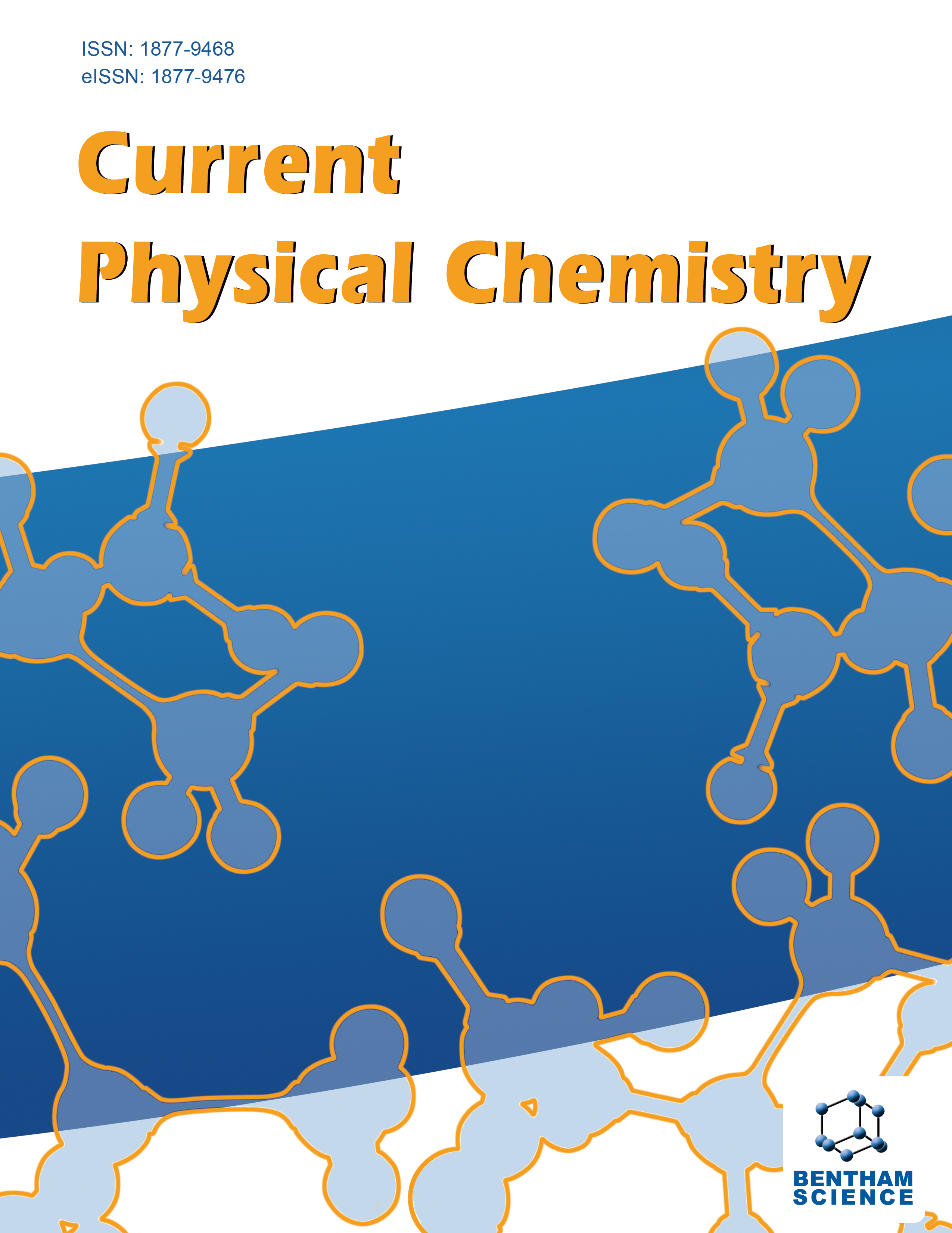- Home
- A-Z Publications
- Current Physical Chemistry
- Previous Issues
- Volume 2, Issue 3, 2012
Current Physical Chemistry - Volume 2, Issue 3, 2012
Volume 2, Issue 3, 2012
-
-
Editorial [Hot Topic: Conducting Polymers (Guest Editor: Ricardo Tucceri)]
More LessA part of this special issue is devoted to conducting polymer-modified electrodes. Particular emphasis is laid on the problems of synthesis, structure, charge transport processes and practical applications of cross-linkable conjugated and ladder polymers. Different interpretations of the charge transport process at these polymer-modified electrodes on the basis of data extracted employing both traditional (Cyclic Voltammetry a Read More
-
-
-
Application of Polyaniline Conducting Polymer as a New Indicator Electrode for Potentiometric Titration of Halide Ions
More LessAuthors: Reza Ansari, Fatemeh Emsakpour, Ali Mohammad-Khah and Majid ArvandThis paper describes a potentiometric titration using a modified pencil graphite electrode with polyaniline (termed as PGE/PAniCl) for determination of halides at low concentrations (ppm). polyaniline (PAni) was first prepared by chemical polymerization of aniline in the presence of HCl. PGE/PAniCl was prepared using a pencil graphite electrode coated by a thin film of PAni/Cl via solution cast method. The PGE/PAniCl indicator electro Read More
-
-
-
Conducting Polymers and their Applications
More LessAuthors: Murat Ates, Tolga Karazehir and A. Sezai SaracThis review article focuses on conducting polymers and their applications. Conducting polymers (CPs) are an exciting new class of electronic materials, which have attracted an increasing interest since their discovery in 1977. They have many advantages, as compared to the non-conducting polymers, which is primarily due to their electronic and optic properties. Also, they have been used in artificial muscles, fabri Read More
-
-
-
Oxetane-functionalized Conjugated Polymers in Organic (Opto)Electronic Devices
More LessAuthors: Ana Charas and Jorge Morgadoπ-Conjugated polymers have found applications as active materials in a range of optoelectronic devices due to being intrinsically semiconducting, exhibiting switchable properties in the course of redox processes, and the possibility of being processed from solution. Current developments in molecular design have been extended to include switchable solubility by means of chemical cross-linking via polymerization of photo-rea Read More
-
-
-
Application of the Surface Resistance Technique to Study the Metal|Polymer Interface: A Review Article
More LessThe use of surface resistance changes as an alternative method to study the metal|polymer interface is reviewed considering both experimental and theoretical aspects. The experimental arrangement in these investigations is, in general, one in which a polymer film is supported on a thin gold film, whose thickness is of the order of the mean free path of the conduction electrons (gold film thickness, φm ∼30 nm). Particular Read More
-
-
-
Effects of Catalytic Site Position on the Performance and Lifetime of Carbon Nanotubes Supported Cobalt Fischer-Tropsch Synthesis Nano Catalyst
More LessAuthors: Ahmad Tavasoli, Parviz Rashidi Ranjbar, Maryam Farahmandi and Hamideh NikookarThe effects of confinement in carbon nanotubes on the performance and lifetime of carbon nanotubes (CNT) supported cobalt Fischer–Tropsch (FT) catalysts are reported. A method was developed to control the position of the catalytic sites on either inner or outer surface of carbon nanotubes. TEM analyses revealed that about 80-85% of cobalt oxide particles can be controlled to be positioned at inner or outer surface of the na Read More
-
-
-
Influence of H2O2 Formed In Situ on the Photodegradation of Ibuprofen and Ketoprofen
More LessAuthors: Eszter Arany, Thomas Oppenlander, Krisztina Gajda-Schrantz and Andras DombiThe efficient photomineralization of ibuprofen and ketoprofen was achieved through the use of a novel combination of a conventional low-pressure mercury lamp (185/254 nm) and a xenon excimer flow-through photoreactor (λmax7equals; 172 nm) with an integrated ceramic gassing unit. During the vacuum-ultraviolet photolysis of water, hydrogen peroxide (H2O2) was produced both in the presence and in the absence of i Read More
-
-
-
Review on Hydrate Dissociation Kinetic Behavior
More LessAuthors: Wen-Zhi Li, Chang-Yu Sun, Sheng-Li Li, Feng-Guang Li, Qing-Yuan, Bei Liu, Qing-Lan Ma, Lan-Ying Yang and Guang-Jin ChenHydrate dissociation is involved in some practical processes, such as exploiting natural gas hydrates, resolving the plugging hazards, and developing industrial techniques. The decomposition mechanisms of gas hydrate above and below ice point are quite different. The presence of porous media may also result in the complication of hydrate dissociation compared with bulk water/hydrate system. In this work, the rec Read More
-
Most Read This Month
Article
content/journals/cpc
Journal
10
5
false
en


